Fall is here, and while we’re wrapping up our boating season on the Bay, many birds are just arriving. We’re not the only ones who love spending the fall by the water. Have you ever wondered what birds consider Chesapeake autumns and winters warm? Here is a list of five common birds you can see on the Bay this fall.
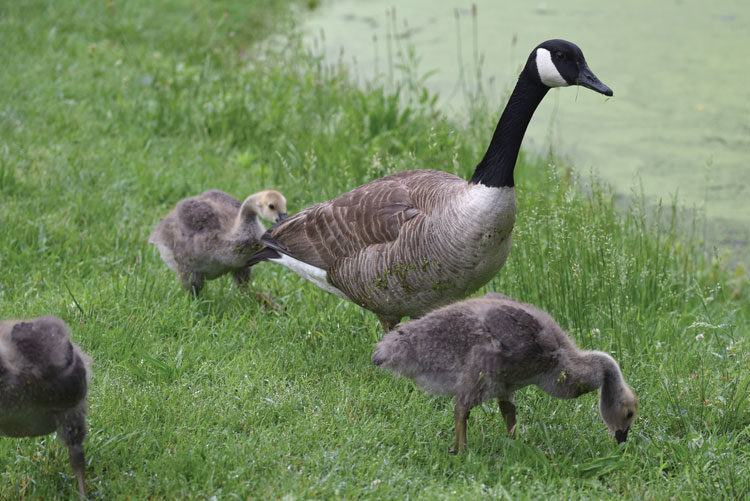
1. Canada Goose
Nothing says fall like sitting in the cockpit wrapped in a blanket watching the Vs of geese fly by. Canada geese live on the Chesapeake year-round. However, it wasn’t always this way. First introduced in the 1930s, resident Canada geese can be found in large numbers throughout the Bay. Migratory geese still come in the fall to escape the harsh Canadian winter.
Canada geese are fairly large, with adults weighing between 6.5 and 20 pounds. Brown with a black head and neck broken up by a white patch behind the eye, the Canada goose is a simple, but beautiful bird. Canada geese will eat corn kernels, wild rice, and a variety of grasses, including the ones in your yard.
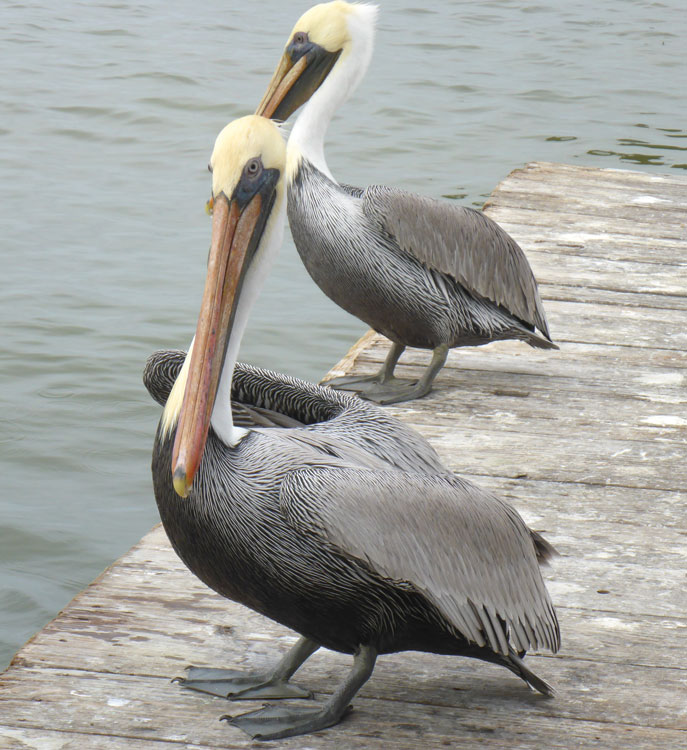
2. Brown Pelican
Brown pelicans are common in the southern half of the Bay year-round; however, they can also be seen further north, especially in the fall. The adults appear mainly grayish brown with a yellowish head. During the breeding season, they have a brown neck that fades to white in their nonbreeding plumage. The young birds are largely solid brown. Brown pelicans are usually fairly easy to identify from a distance as their large size and huge bill tend to stand out. Brown pelicans catch their main prey, fish, by flying up and then diving headfirst into the water.
While brown pelicans are commonly seen on the Chesapeake, it hasn’t always been this way. During the mid-1900s, brown pelicans almost died off in North America due to pesticides such as DDT and endrin that were present in their food. Fortunately, brown pelicans have made a great recovery and now can be found in abundance throughout the southern coasts of North America.
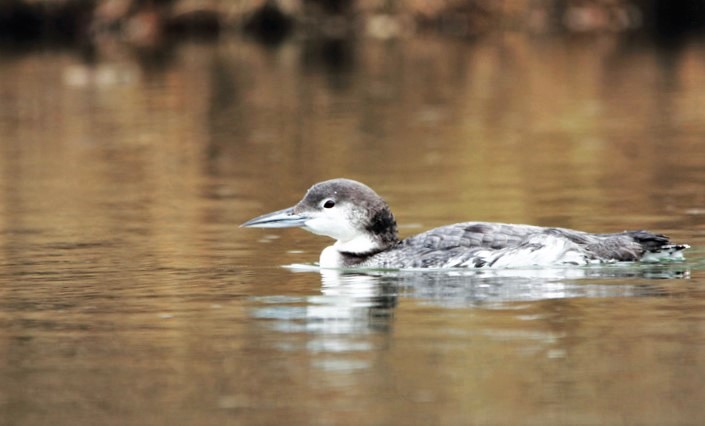
3. Common Loon
Common loons are present on the Chesapeake year-round, but they are only found in large numbers during the fall, winter, and spring. The fall sees the highest number of loons coming to the Bay. Common loons migrate to the Chesapeake from their breeding grounds in the northern U.S. and Canada. During the breeding season, loons exhibit stunning black and white plumage that consists of a solid black head, a vertically striped black and white neck with a greenish black band, a black and white checked back, and a red eye.
The plumage of nonbreeding birds looks much duller with a grayish brown back. The top of the head and back of the neck also have the same grayish brown color. Common loons dive for their food which typically consists of fish, but sometimes includes leeches, crustaceans, and other aquatic animals.
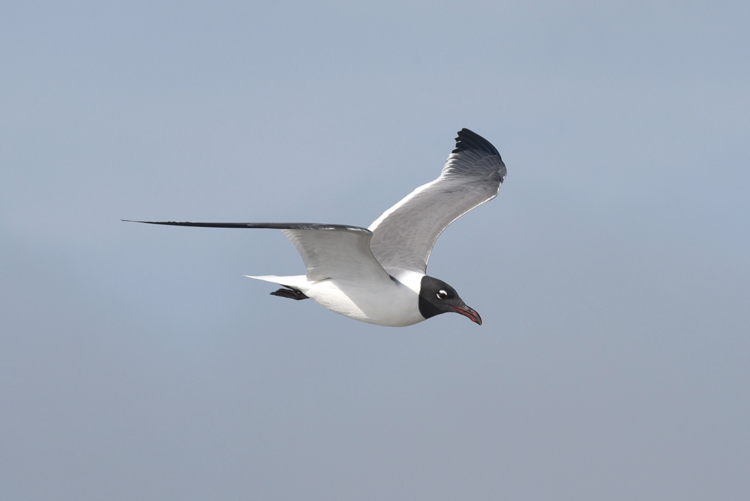
4. Laughing Gull
Named for its distinctive call, the laughing gull is found on the Bay year-round. Its numbers peak during the late summer and fall. Adults in breeding plumage look striking with a black hood, a gray back, a white neck and underparts, and a reddish bill. In winter, adult birds lose the black hood; the bill turns to black, and the body becomes grayer.
Young birds are a combination of browns and grays that gradually change into the adult plumage. Laughing gulls often form huge flocks around bait balls. While this provides a clear tip-off for anglers, laughing gulls sometimes find themselves stuck in the fishing lines and a temporary part of the day’s catch.
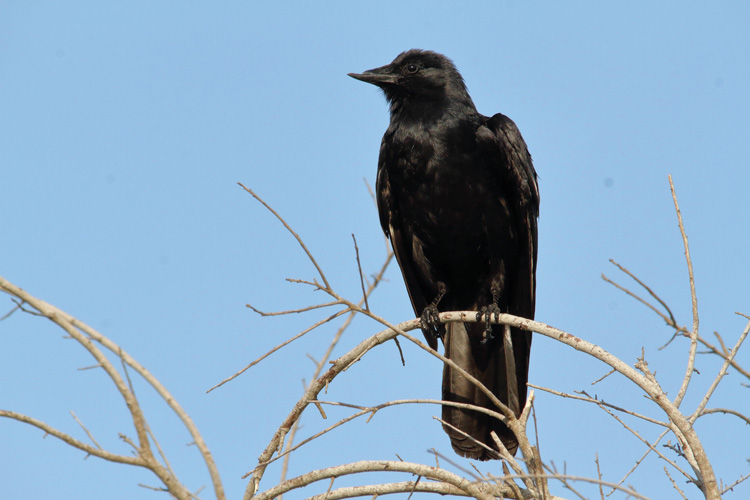
5. Fish Crow
Two types of crows frequent the Bay: the fish crow and the American crow. Of the two, the fish crow is slightly smaller. Since fish crows closely resemble the appearance of the American crow, the best way to separate the two species is by call. A fun way to remember the different calls is to ask a crow, “Are you an American?” If it is a fish crow, it responds “Uh-Uh” whereas an American crow will respond “Yaw-Yaw.”
Fish crows are found on the Bay year-round and can be easily heard and seen. They congregate in large flocks during the late fall and winter, making their large numbers a sight to see. As omnivores, fish crows will eat almost anything including bird eggs, berries, trash, and small aquatic invertebrates.
While some of these birds are easier to find than others, knowing some of the common birds of fall is a great way to spice up your last night out for the season or to wow your buddies on a fishing trip.
Article by Hannes Leonard




